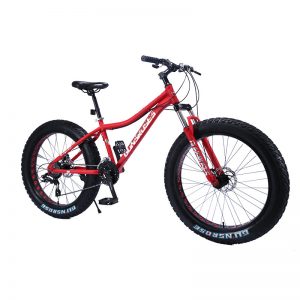Introduction: To appreciate the capabilities of fat tire bikes, it’s essential to understand their unique components and design. In this blog, we’ll dissect the anatomy of fat tire bikes, examining the specific features that set them apart from traditional bikes.
- Fat Tires: The defining feature of fat tire bikes is, of course, the wide tires. We’ll delve into the advantages of fat tires, such as improved grip, floatation over soft surfaces, and shock absorption.
- Wide Rims: Fat tire bikes are equipped with wide rims to accommodate the oversized tires. We’ll discuss how these rims contribute to tire stability and provide better handling on rough terrains.
- Beefed-Up Frames: Fat tire bikes often boast beefed-up frames to handle the demands of off-road riding. We’ll explore how the sturdy frame construction enhances durability and stability during aggressive trail riding.
- Disc Brakes: Given the need for reliable braking power on challenging terrains, fat tire bikes are typically equipped with disc brakes. We’ll explain how disc brakes ensure consistent and responsive braking in all conditions.
- Drivetrain and Gearing: Fat tire bikes offer a variety of drivetrain and gearing options. We’ll discuss how the choice of drivetrain affects the bike’s performance, from smooth cruising to climbing steep inclines.
- Suspension Systems: Some fat tire bikes feature suspension systems to further enhance rider comfort and control. We’ll explore the advantages of front suspension forks or full-suspension setups on rugged trails.
Conclusion: The components of fat tire bikes work in harmony to create a specialized and capable off-road cycling machine. By understanding their anatomy, riders gain a deeper appreciation for the unique design that allows fat tire bikes to shine in any adventure.















